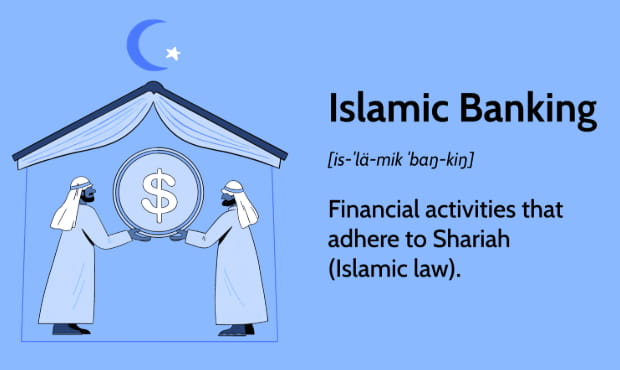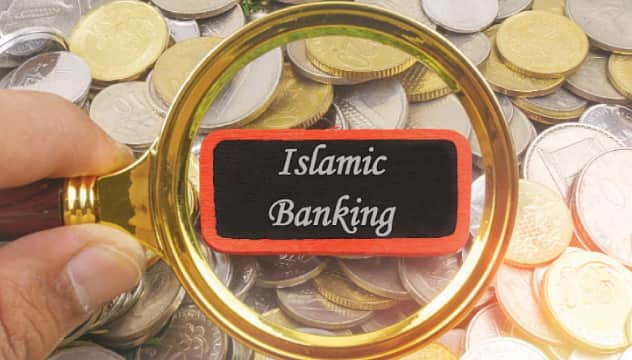Contents
When it comes to banking, most of us immediately think of the words “credit”, “deposit” and of course “interest”, right? What if we told you that there is a banking model where money is not rented and the entire system is based on “trade” and “partnership” instead of “interest”? “Participation Banking” is an alternative that is based on exactly this philosophy and has become increasingly popular in Turkey and the world in recent years. Maybe you have heard of it, maybe you know it as “interest-free banking”, but you are wondering “how, how does a bank make money without interest?”
Participation banking does not only avoid interest; it also aims for investments to be ethical and focused on the real sector. In other words, supporting activities based on production and trade is at the forefront. In this respect, participation banking, which also includes the concept of social responsibility, aims for the fair and efficient use of resources while contributing to economic growth.

In this model, the credit system also works differently. Instead of lending to customers with interest; support is provided through Islamic financial methods such as murabaha (term sale), mudaraba (labor-capital partnership) and ijara (lease). In this way, it is aimed for both the bank and the customer to establish a business relationship based on mutual consent and transparency. Participation banks also try to remain loyal to ethical finance principles by preferring investments with high social sensitivity.
In our analysis, we will take a journey into the sometimes complex world of this subject in its simplest and most understandable form. Let’s solve the secret of this system, its basic principles and its functioning in daily life together.

Philosophy: “Interest-free” and “Participation” Principle
To understand participation banking, we must first grasp the most fundamental difference: At the heart of this system lies the principle of “interest-free”. In traditional banking, money is like a commodity that can be rented; when the bank lends you money, it adds a “rent fee” (interest) to it or pays you a fixed “rental income” (interest) when you deposit your money. Participation banking, on the other hand, argues that money itself is not a commodity that can be bought and sold. Money is merely a medium of exchange and gains its value only when it is transformed into a real economic activity.
So how does the system work if there is no interest? The answer lies in two key words: Trade and Partnership. Instead of buying and selling money directly, participation banks focus on the trade of the goods or projects that will be financed with that money or on becoming a partner in that project. In other words, instead of a cash flow, the bank is involved in the financing cycle of a real asset (house, car, machine, etc.) or a real project. This ensures that the money is used in the real economy, not in speculative markets.
The most concrete form of this partnership spirit is the principle of “Participation in Profit and Loss”. According to this principle, a customer who deposits his savings in a participation bank is not a creditor who lends to the bank with a fixed interest rate, but rather a kind of risk partner in the projects that the bank will finance. The bank invests in real projects with the funds it collects. If profit is made from these projects, this profit is shared between the bank and the customer at predetermined rates. If (although rare) a loss is incurred, this loss is also shared. This is based on the justice of “sharing both risk and return”.

Advisory Board and Social Filter
Another important feature of participation banking is that it has an ethical and social filter. These banks cannot use the funds they collect to finance companies or projects that operate in areas that are not compatible with Islamic principles (such as interest-bearing transactions, alcohol, tobacco, pork, gambling, and the arms industry). This “ethical filtering” creates a center of attraction not only for those with religious sensitivities, but also for all customers who want their money to be used in socially and morally responsible areas.
In order to ensure that this entire system operates in accordance with the principles, each participation bank has an “Advisory Board” or “Consulting Committee”. This board, consisting of Islamic law scholars who are experts in their fields, monitors and approves (“grants”) whether all the products offered by the bank, all the transactions it conducts, and all the contracts it signs comply with the principles of participation banking. This is a kind of independent control mechanism for the transparency and security of the system.

How Money is Valued? Participation Accounts
We understand the philosophy of participation banking. So, when we deposit our savings in these banks, how does our money follow a path and how is it valued? Participation banks collect funds with two different types of accounts: Current Accounts and Participation Accounts. The operation of these two accounts and the return they offer to the customer are completely different.
Current Accounts are just like demand deposit accounts in traditional banks. They are accounts that you use for your daily money transfers, bill payments, and where you keep your money safely. No profit share is applied to the money in these accounts, because this money is not included in a partnership pool. The bank does not promise you a return on this money, but guarantees to pay back all of your money whenever you want.
The real engine of the system is “Participation Accounts”. This is the equivalent of the “term deposit account” in traditional banks. However, the biggest difference is that it does not promise you a predetermined, fixed interest rate. When you deposit your money into this account for a certain period of time (e.g. 1 month, 3 months, 1 year, etc.), you sign a profit-loss sharing agreement with the bank.

Participation Pool and Dividend
The money you deposit is transferred to a large “participation pool” created by the bank. The bank directs all the funds accumulated in this pool to commercial and real projects that comply with its own principles (for example, financing the purchase of machinery for a factory, supporting a housing project, etc.) and operates it. The total profit obtained from these projects is calculated at the end of the term.
At the end of the term, the bank first receives its share of the total profit of the pool, and the remaining profit is distributed to the customers according to the previously agreed profit sharing ratios (for example, 80% customer – 20% bank). Therefore, the return paid to you is called “profit share”, not “interest”. Since the rate of this profit share depends on the performance of the projects in the pool at that time, it is not clearly known at the beginning of the term; an estimate can only be made by looking at the rates in the past periods.
Participation Banking: Murabaha and Other Methods
We have seen the fundraising methods of participation banks. So, how does the system work when you need resources for a house, car or workplace? The most fundamental difference here starts with the terminology. Participation banks do not give you a “consumer loan or business credit”, that is, they do not lend you cash and collect interest on it. Instead, they provide “financial support” by purchasing the goods or services you need.
The most commonly used financing method is “Murabaha” (Cost Plus Profit Sale). Let’s explain this method with a simple example: You want to buy a car. You go to a participation bank. Instead of giving you cash directly, the bank goes on your behalf and buys the car from the seller in cash. Then, by adding its own profit to it, it sells the car to you on credit. You pay this new price of the car to the bank in installments. In other words, there is no debt, but a purchase and sale of goods (trade). The bank’s profit comes from the profit it makes from this trade, not from interest.

Another popular method is “Icare” (Financial Leasing or Leasing). This method is used especially for the needs of commercial enterprises such as machinery, equipment or workplace. For example, you will buy a new machine for your factory. The bank buys that machine and rents it to you for a certain period of time, keeping the ownership. You pay monthly rental fees. At the end of the rental period, you usually have the right to buy that machine for a symbolic price. The bank’s income consists of these rental payments.
Participation Banking: Sukuk and Mudaraba
There are also methods such as “Mudaraba” and “Musharaka” which are mostly used in project financing and are closer to real partnership. In Mudaraba, there is a “labor-capital partnership”; one party (the customer or entrepreneur) contributes his labor and project, and the other party (the bank) contributes the capital. The profit is shared in agreed proportions. In Musharaka, on the other hand, it is a model where both parties are partners in both capital and management. These methods work almost like venture capital funds.
Finally, its equivalent in the world of securities is “Sukuk” (Interest-Free Certificate). Sukuk is a security issued based on an asset, granting the owner joint ownership rights over that asset and the right to receive a share of the income (such as rent) obtained from that asset. Instead of a fixed interest income as in traditional bonds or notes, it offers an income dependent on the performance of the underlying asset. This is the most important instrument of participation banking in capital markets.
Although this system is based on Islamic finance principles, with its features such as “asset-based financing”, “risk sharing” and “ethical investment”, it has become an attractive alternative not only for those with religious sensitivities but also for everyone who wants to know where their money is going and contribute to the real economy.
Our aim is not to favor one system over another, but to let you know your options. Understanding how participation banking works gives you the freedom to choose the system that best suits your own values and financial goals when managing your money. Now you know the answer to the question “how does an interest-free bank make money?”
